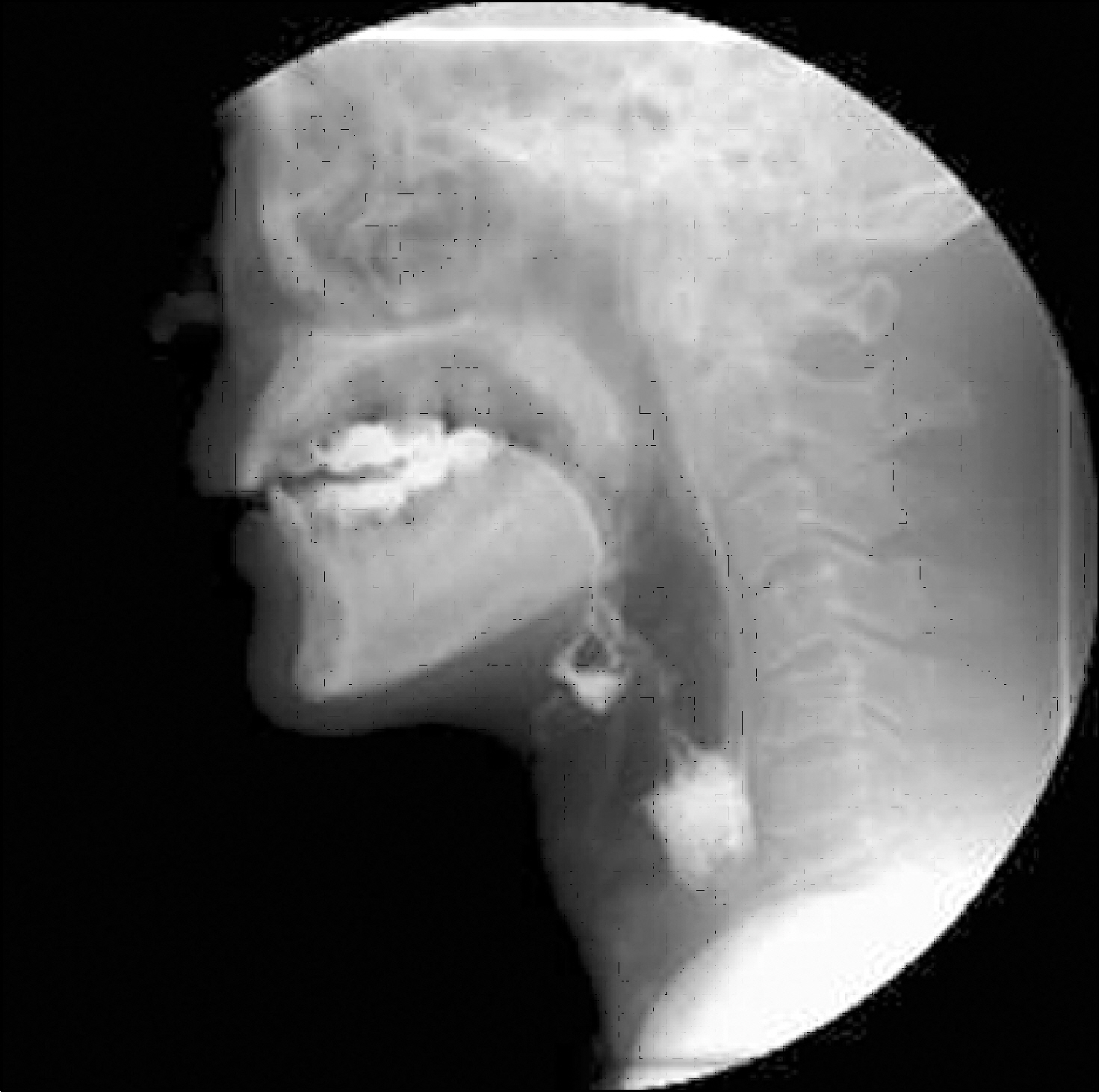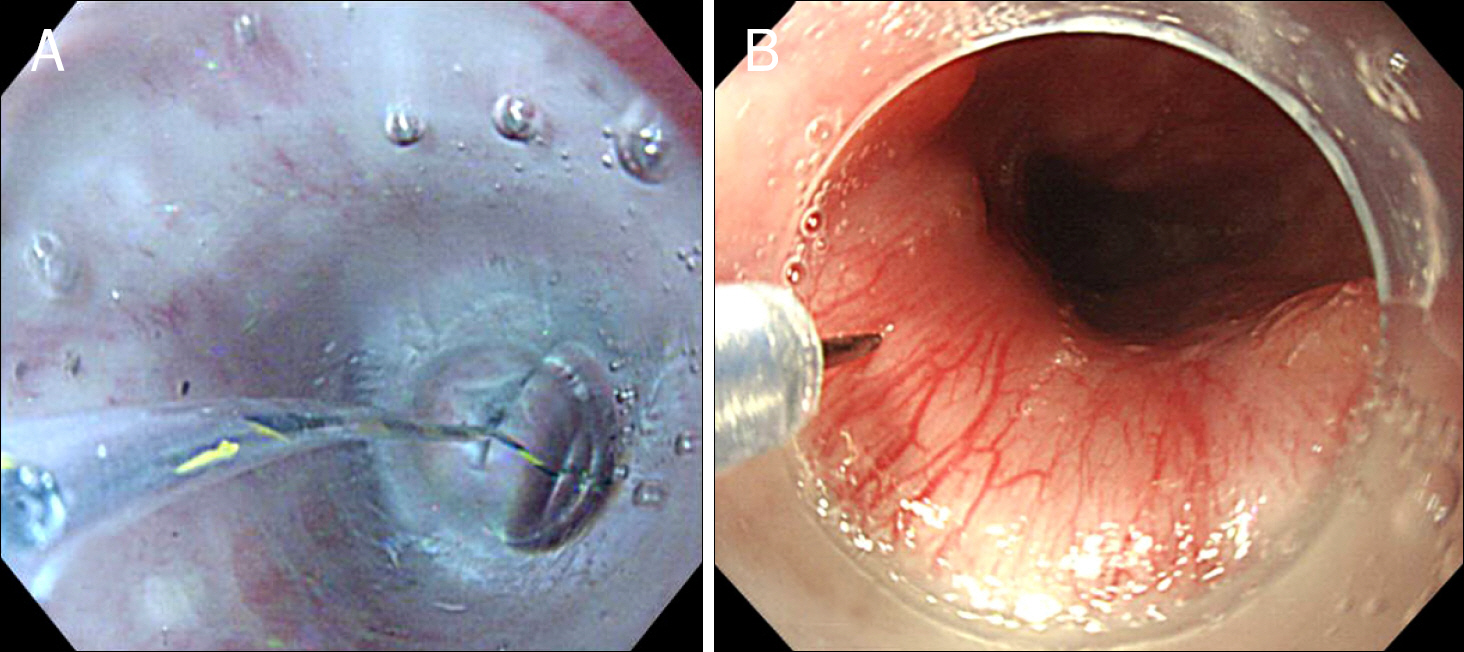Korean J Gastroenterol.
2014 May;63(5):325-328. 10.4166/kjg.2014.63.5.325.
Treatments with Balloon Catheter Dilatation and Botulium Toxin Injection in a Patient with Pharyngeal Dysphagia Secondary to Cricopharyngeal Dysfunction
- Affiliations
-
- 1Department of Internal Medicine, Sanggye Paik Hospital, Inje University College of Medicine, Seoul, Korea. osbbang@paik.ac.kr
- KMID: 2155333
- DOI: http://doi.org/10.4166/kjg.2014.63.5.325
Abstract
- No abstract available.
MeSH Terms
Figure
Reference
-
References
1. Sivarao DV, Goyal RK. Functional anatomy and physiology of the upper esophageal sphincter. Am J Med. 2000; 108(Suppl 4a):27S–37S.
Article2. Cook IJ, Dodds WJ, Dantas RO, et al. Opening mechanisms of the human upper esophageal sphincter. Am J Physiol. 1989; 257:G748–G759.
Article3. Han DS, Chang YC, Lu CH, Wang TG. Comparison of disordered swallowing patterns in patients with recurrent cortical/sub- cortical stroke and first-time brainstem stroke. J Rehabil Med. 2005; 37:189–191.4. Kuhn MA, Belafsky PC. Management of cricopharyngeus muscle dysfunction. Otolaryngol Clin North Am. 2013; 46:1087–1099.
Article5. Buchholz DW. Cricopharyngeal myotomy may be effective treatment for selected patients with neurogenic oropharyngeal dysphagia. Dysphagia. 1995; 10:255–258.
Article6. Clary MS, Daniero JJ, Keith SW, Boon MS, Spiegel JR. Efficacy of large-diameter dilatation in cricopharyngeal dysfunction. Laryngoscope. 2011; 121:2521–2525.
Article7. Kelly EA, Koszewski IJ, Jaradeh SS, Merati AL, Blumin JH, Bock JM. Botulinum toxin injection for the treatment of upper esophageal sphincter dysfunction. Ann Otol Rhinol Laryngol. 2013; 122:100–108.
Article8. Cook IJ, Kahrilas PJ. AGA technical review on management of oropharyngeal dysphagia. Gastroenterology. 1999; 116:455–478.
Article9. Dauer E, Salassa J, Iuga L, Kasperbauer J. Endoscopic laser vs open approach for cricopharyngeal myotomy. Otolaryngol Head Neck Surg. 2006; 134:830–835.
Article10. Blitzer A, Brin MF. Use of botulinum toxin for diagnosis and management of cricopharyngeal achalasia. Otolaryngol Head Neck Surg. 1997; 116:328–330.
Article
- Full Text Links
- Actions
-
Cited
- CITED
-
- Close
- Share
- Similar articles
-
- The Effect of Balloon Dilatation through Video-Fluoroscopic Swallowing Study (VFSS) in Stroke Patients with Cricopharyngeal Dysfunction
- Endoscopic botulinum toxin injection in cricopharyngeal dysphagia
- Endoscopic Balloon Dilatation for the Treatment of Cricopharyngeal Dysfunction with Dysphagia
- A Case of Dysphagia due to Cricopharyngeal Dysfunction and Diffuse Idiopathic Skeletal Hyperostosis
- Effect of Repetitive Balloon Dilatation Treatment Confirmed by High-Resolution Manometry in a Patient with Cricopharyngeal Dysfunction: A Case Report




